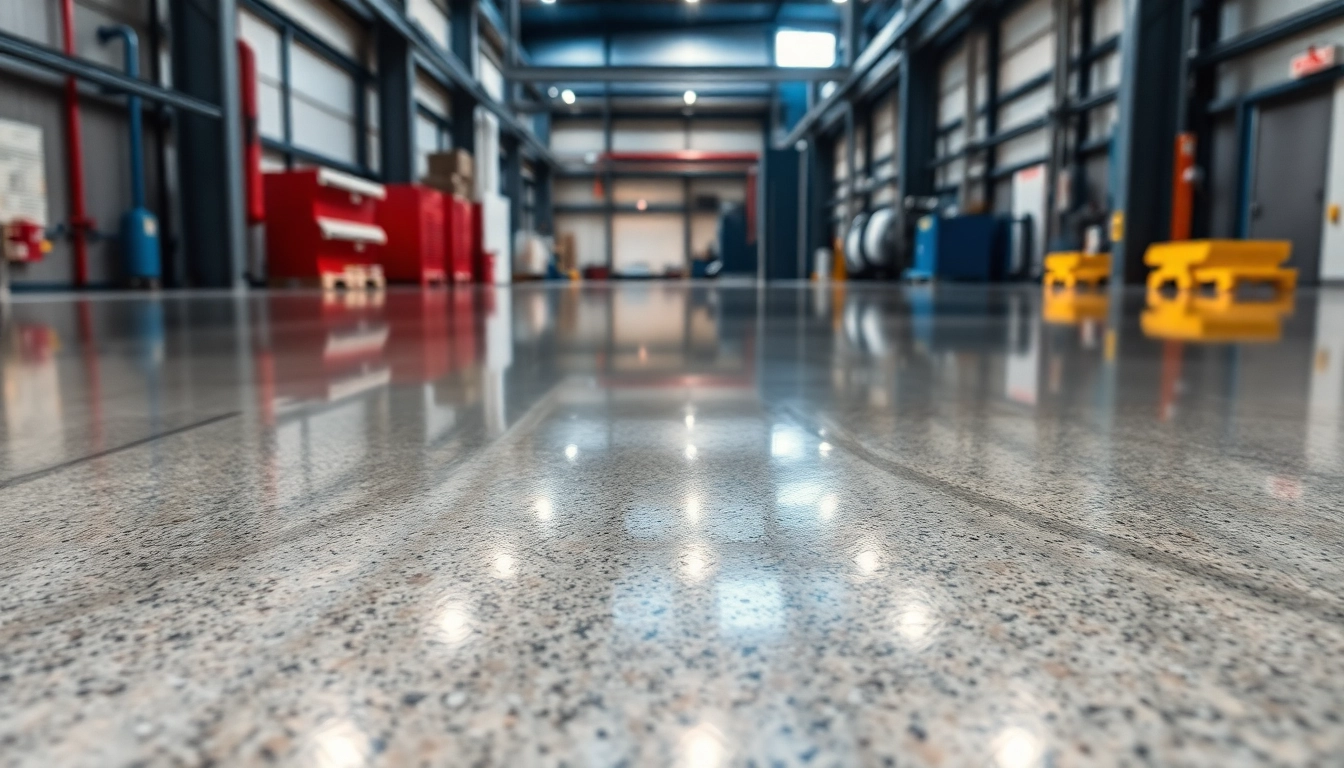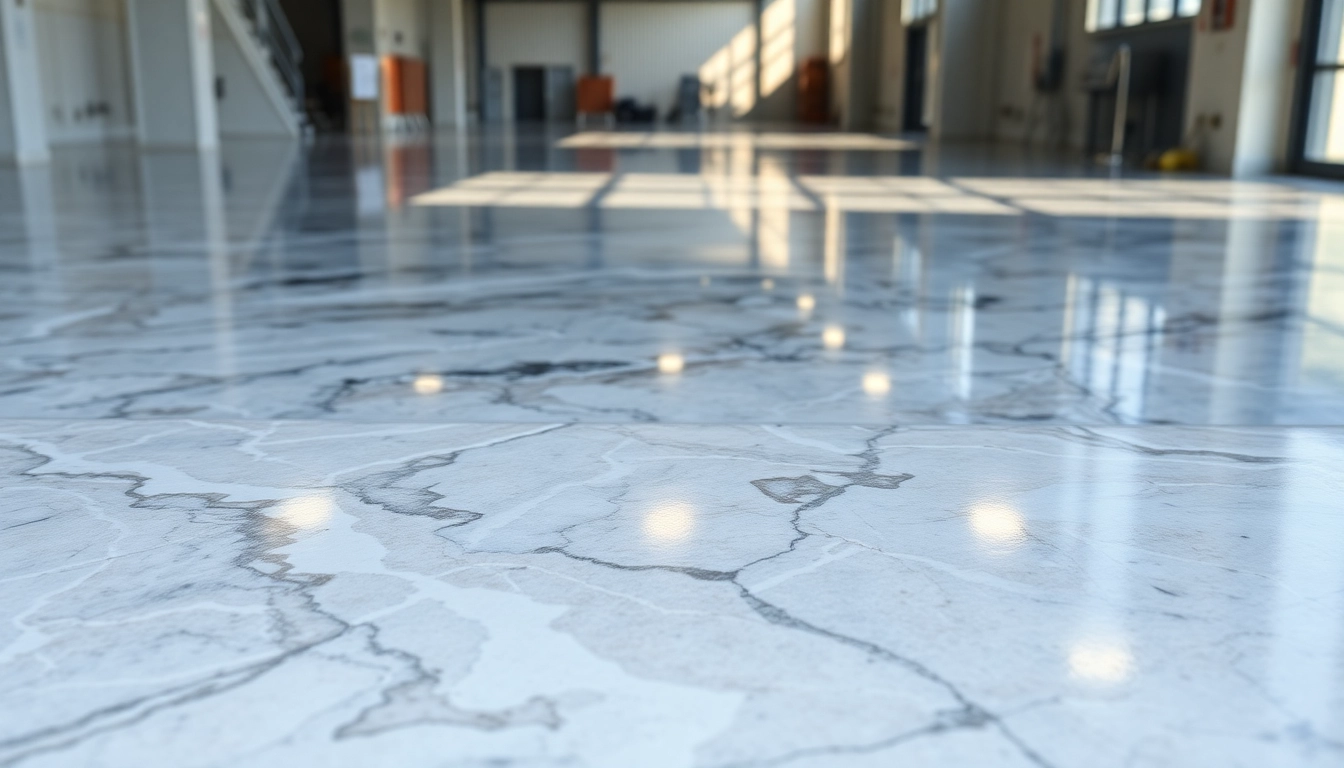Enhance Your Space with Durable and Stylish Epoxy Resin Floors for Every Application
Understanding the Benefits of Epoxy Resin Floors
Epoxy resin flooring has gained widespread popularity across various industries and residential applications due to its exceptional durability, aesthetic flexibility, and cost-effectiveness. As businesses and homeowners seek resilient solutions that combine functionality with visual appeal, epoxy floors stand out as a versatile choice. For those exploring options to upgrade their spaces, understanding the core benefits of epoxy resin floors is essential. From commercial warehouses to stylish garages, epoxy resin floors offer unmatched performance and design potential. To learn more about how epoxy resin floors can transform your environment, visit Epoxy resin floor.
Durability and Wear Resistance
One of the primary advantages of epoxy resin floors is their outstanding durability. Epoxy creates a hard, seamless surface that resists abrasion, impact, and chemical spills, making it ideal for high-traffic areas. Industrial facilities, for instance, benefit from epoxy floors that can withstand heavy machinery, foot traffic, and harsh cleaning agents without degradation. Additionally, epoxy’s chemical resistance ensures that spills from oils, solvents, and acids do not compromise the integrity of the flooring. This resilience translates into fewer repairs and replacements, significantly reducing long-term maintenance costs.
Case studies have demonstrated that epoxy floors maintain their structural integrity for decades when properly installed, making them a reliable investment for long-term use. Their seamless nature also helps prevent cracks and porous surfaces that could harbor bacteria or debris, further enhancing hygienic standards in environments like hospitals, kitchens, and laboratories.
Aesthetic Appeal and Customization Options
Beyond their toughness, epoxy floors excel in aesthetic appeal. They can be customized with a wide array of colors, textures, and finishes, including matte, gloss, metallic, and even 3D effects. This versatility allows designers and property owners to tailor the flooring to match specific themes or branding requirements. For example, a retail store might opt for vibrant, custom colors to enhance brand identity, while a modern garage could feature a sleek metallic or marble-look finish.
Achieving unique visual effects is also possible through techniques like metallic epoxy, which provides a high-end, swirling design that mimics natural stone or abstract art. This ability to create visually stunning surfaces makes epoxy floors a preferred choice for residential basements, stylish commercial interiors, and creative workspace environments.
Cost-Effective Maintenance and Longevity
The initial investment in epoxy flooring is often offset by its minimal maintenance requirements. Due to their smooth, seamless surfaces, epoxy floors are easy to clean—typically requiring just regular sweeping and occasional mopping with mild cleaners. Unlike porous or textured surfaces, they do not trap dirt or debris, which simplifies upkeep and reduces labor costs.
Furthermore, epoxy floors are highly resistant to staining, water damage, and chemical spills, preventing costly repairs and replacements over time. When properly installed, they can last 10 to 20 years or more with minimal service interventions. Such longevity ensures that property owners enjoy a high return on investment while maintaining a clean and professional appearance.
Choosing the Right Epoxy Resin System
Types of Epoxy Floors for Commercial and Industrial Uses
Understanding the different types of epoxy systems is crucial for selecting the best solution for your specific needs. Commercial and industrial environments often require high-performance coatings such as self-leveling epoxies, which provide smooth, even surfaces ideal for manufacturing plants and warehouses. Urethane-modified epoxies offer increased flexibility and chemical resistance, suitable for laboratories and cleanrooms.
Polyaspartic and fast-curing epoxy formulations are also available, providing options for quicker installation timelines in busy operations. Each type varies in composition, curing time, and performance characteristics, so consultation with a flooring expert can help determine the optimal choice for your environment.
Selecting the Best Finish and Color
Finish options range from high-gloss for a reflective, vibrant appearance to matte for a more subdued, slip-resistant surface. Color options are virtually unlimited, allowing customization to match branding or design schemes. For high-visibility safety zones, bright colors and reflective particles can improve safety, while darker shades help conceal dirt and imperfections in residential garages or basements.
Applying decorative chips, metallic pigments, or embedded graphics further enhances aesthetics and function. Professional guidance ensures that the chosen finish and color not only meet visual preferences but also deliver the necessary performance attributes.
Factors to Consider: Thickness, Slip Resistance, and Chemical Resistance
Determining the appropriate thickness of epoxy coatings depends on the expected foot traffic and load-bearing requirements. Thicker layers provide increased durability but may involve longer curing times. Slip resistance can be enhanced by incorporating textured additives or anti-slip aggregates, critical for safety in wet or oily environments.
Chemical resistance is vital in industrial settings where exposure to corrosive substances occurs. Selecting formulations specifically designed for chemical resistance ensures longevity and safety. It’s essential to evaluate these factors collectively when planning your epoxy flooring installation.
Installation Process: Step-by-Step Guide
Surface Preparation and Cleaning
The foundation for a durable epoxy floor starts with meticulous surface preparation. Concrete surfaces must be thoroughly cleaned, chipped, or shot-blasted to remove dirt, grease, and any loose debris. Moisture testing and surface profiling ensure proper adhesion. Clean, dry, and roughened surfaces serve as the ideal base for epoxy application, preventing future delamination or bubbling.
Mixing and Applying Epoxy Coatings
Following manufacturer instructions, two-part epoxy components are mixed in precise ratios, often with additives for color or slip resistance. Application methods vary from rollers and squeegees to spray guns, depending on the project size and desired finish. Uniform thin coats are ideal for even curing and appearance. It’s crucial to work in a controlled environment to prevent dust contamination and ensure proper curing conditions.
Curing Times and Final Inspection
Epoxy curing typically takes 24-72 hours, with full chemical resistance developing over a week. During this period, restricted access and environmental controls—such as temperature and humidity regulation—are recommended. Once cured, the floor undergoes inspection for defects, and additional coats or topseals may be applied for enhanced performance or aesthetics.
DIY Tips and Professional Installation Insights
Common Challenges and How to Avoid Them
DIY epoxy flooring projects often face challenges such as improper surface prep, uneven mixing, or rushed curing. Ensuring thorough cleaning, precise mixing, and adherence to curing schedules minimizes these issues. Ventilation and protective gear are also critical, especially in enclosed spaces, to handle fumes and prevent accidents.
Tools and Supplies Needed for DIY Projects
Essential tools include power washers or grinders for surface prep, epoxy mixers, rollers, squeegees, and protective equipment like masks and gloves. Purchasing quality epoxy kits designed for residential use simplifies the process. Detailed tutorials and support from suppliers can also enhance the success rate of DIY installations.
Working with Contractors for Flawless Results
While DIY epoxy floors are feasible, professional installation ensures precision, especially for large or complex projects. Contractors bring expertise in surface prep, application techniques, and curing management, reducing the risk of costly errors. When selecting a contractor, verify credentials, reviews, and sample work to ensure quality craftsmanship.
Maintaining and Repairing Your Epoxy Floor
Routine Cleaning and Preventative Care
Regular cleaning involves sweeping or vacuuming to remove dirt and debris, followed by damp mopping. Using non-abrasive, pH-neutral cleaners preserves the epoxy’s finish. Applying sealants or topcoats periodically can restore gloss and add an extra layer of protection against wear.
Identifying and Fixing Cracks or Damage
Early detection of cracks or chips is essential to prevent further deterioration. Small cracks can be filled with epoxy patches or sealants, while deeper damage may require spot resurfacing. Consulting with professionals for repairs ensures the restoration maintains the integrity and appearance of the original floor.
Refinishing and Long-Term Upkeep
Over time, epoxy floors may need recoating to restore their original shine or improve chemical resistance. Surface preparation before recoating is vital for adhesion. Proper maintenance prolongs the lifespan of the floor, maintains safety standards, and preserves aesthetics for years to come.



